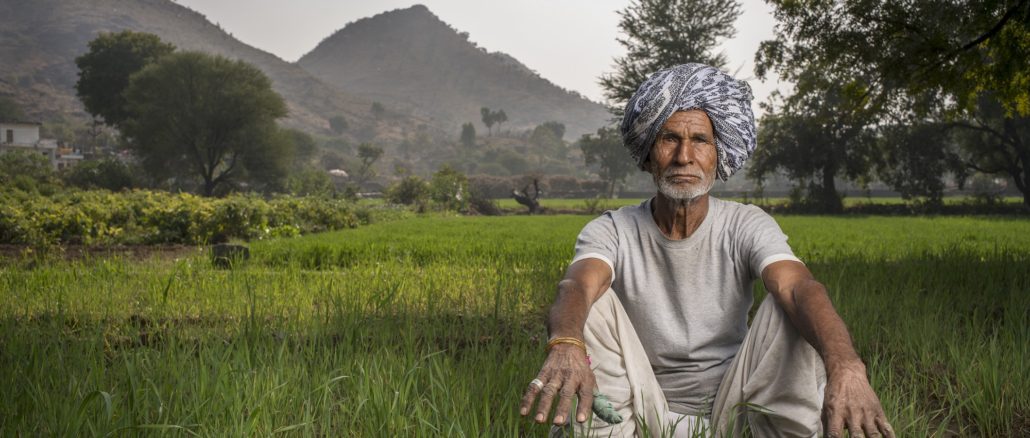
Portraits of Rajasthan with Leica and Sony
By Shourya Ray – His website is HERE,
We travel, initially, to lose ourselves; and we travel, next, to find ourselves. We travel to open our hearts and eyes and learn more about the world than our newspapers will accommodate. We travel to bring what little we can, in our ignorance and knowledge, to those parts of the globe whose riches are differently dispersed.
— Pico Iyer on “Why We Travel”
Driving through the cities and villages of Rajasthan provides for an intimate view of rural India. The sun drenched countryside is dotted with a resilient vegetation common to drier, desert, climates. Villagers, mixed in with cows, herds of goats and the odd camel, walk the long stretches of roads between villages, pausing for rest under the sparse shade of khejri trees. This is a part of the tourist trail that is rarely seen.
The usual stops along the Rajasthan tourist trails are the cities of Jaipur, Ajmer, Jodhpur and Udaipur. Air conditioned tourist vans carrom between these cities, anxiously keeping to a time table as they ferry their passengers between forts, historic temples and faded palaces that now serve as heritage hotels.
In between these cities, the lives of villagers go on unvisited. Their lives are linked to the annual monsoons, the growth of the wheat crops and eking out a living between the crop seasons.
Not all are tied to the land for a livelihood, of course. Many work as ad-hoc workers in the construction industry. They gather near roundabouts in the cities, waiting to be picked up in a truck each day for itinerant labor. The men mix the mortar, break down blocks of sandstone that goes into building walls and buildings. Women carry these sandstone blocks on their heads one at a time until a veritable mountain has been moved. Sand, for mixing into mortar, is moved in metal bowls, balanced on the heads of women.
Goat herders, milk men, potters, camel owners giving rides to tourists and children tending to livestock or clearing bundles of sticks from the farm land round out the village scene. Amongst the bustle of daily life, children visiting from the cities bring out proud grand parents into the courtyards of their homes for an impromptu gathering and celebration.
My portraits are more about me than they are about the people I photograph — Richard Avedon
Over the course of two weeks in December of 2017, we drove over 500 miles through countless villages. Knocking on random doors led us to delightful surprises. An actor getting dressed up as the deity Hanuman welcomed us into his courtyard to watch him get ready; grandparents welcomed us in and insisted on portraits with their children; the owner of a buffalo wanted a portrait with his prized cattle.
Further away from homes, we ran into countless children — some bravely struck poses of their favorite cricket stars, while others stared into the camera with gravitas that belied their ages. In the construction fields, women laborers approved of the relief from work by putting down their heavy metal bowls and posed by the mounds of soil that they would have to move by hand.
Plates 1 — Actor, portraying the deity Hanuman, applying the final touches in the courtyard of his home; Hamlet of Salawas. Plate 2 — An elderly Hajji; Outskirts of Salawas.
–
Plate 3 — Woman carries sandstone blocks at a construction site; Kankani Village. Plate 4 — Women laborers, at a construction site, pause for a break; Kankani village.
–
Plate 5 — Kankulalji Nagda, working in his wheat field. He has a Masters in Economics and Arts, yet has worked in agriculture all his life. His adult sons work in Mumbai as dairy owners; Village of Rama.
–
Plate 6 — Woman clearing a field; Kadel village. Plate 7 — Woman working in the field that she owns; Kadel village.
–
Plate 8 — Man with his buffalo; Kankani village.
–
Plate 9 — Nandaji and Shadur Singh. Rajput milkmen from the village of Motisir. Plate 10 — Ramesh, the camel, and his owner pause for a break on their way home for the day; On the road to the hamlet of Salawas.
–
Plate 11 — Goat herder; Outskirts of Salawas
–
Plate 12 — A boy, on his way home, is joined by a stray calf; Outside Kadel village. Plate 13 — Two girls clearing sticks from their parents land; Outside Kadel village
–
Plate 14 — Children herding goats; Village of Delwara
–
Plate 15 — Boys pause a cricket game to strike a pose; Outside Kankani village
–
Plates 16 & 17 — Women outside her home; Kankani village. Plate 18 — Hem Kumar and child; Delwara
–
Plate 19 — Shital and Santhosh, on the road from Dungriyakhurd. Plate 20 — Woman carrying sandstone blocks at a construction site; Kankani.
–
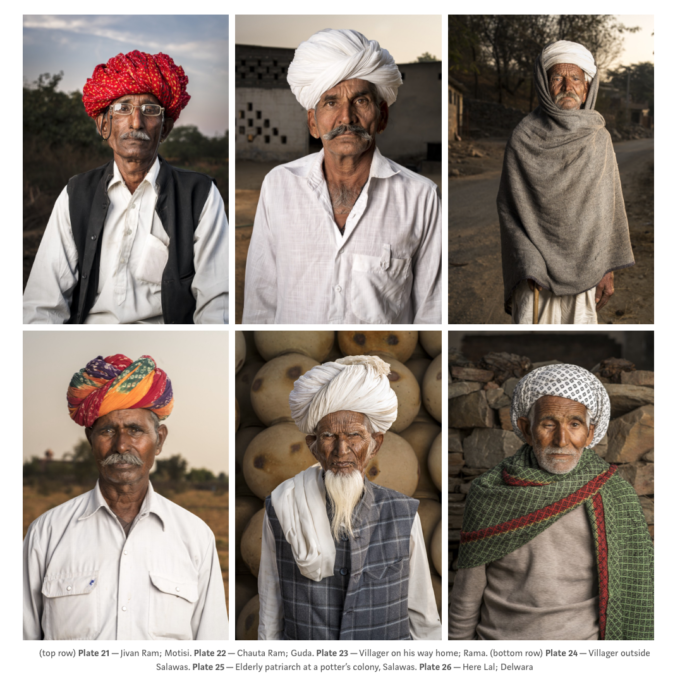
–
Plate 27 — Man breaking sandstone blocks into smaller bricks at a construction site; Salawas. Plate 28 — Woman weeding a field; Salawas
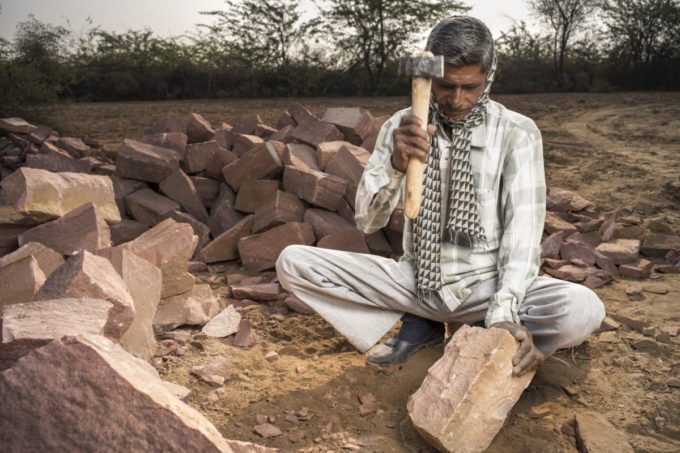
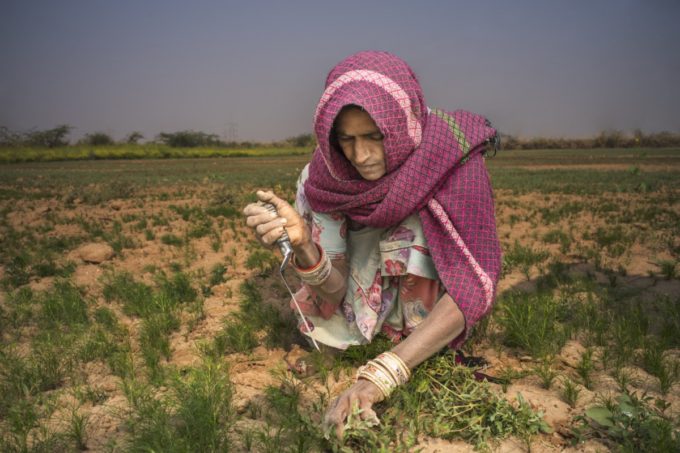
–
(top row) Plate 29 — Sumitra Rawal, carrying a basket of dried manure to be used as fuel in the oven; Rama. Plate 30 — Woman clearing dirt from a field; Rama. Plate 31 — Kesar Kumar pumping water to take back to her home; Delwara. (bottom row) Plate 32 — Shenaz Banu, washing dishes in the courtyard of her home; Delwara. Plates 33 & 34 — Family of Surendra Kumar, a potter; Delwara
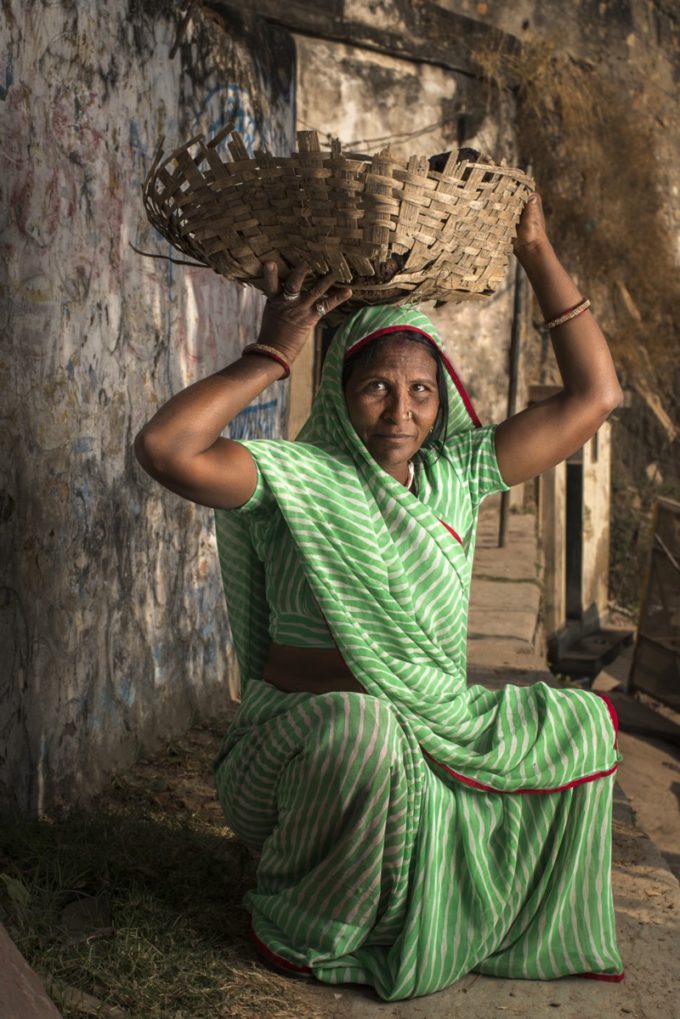
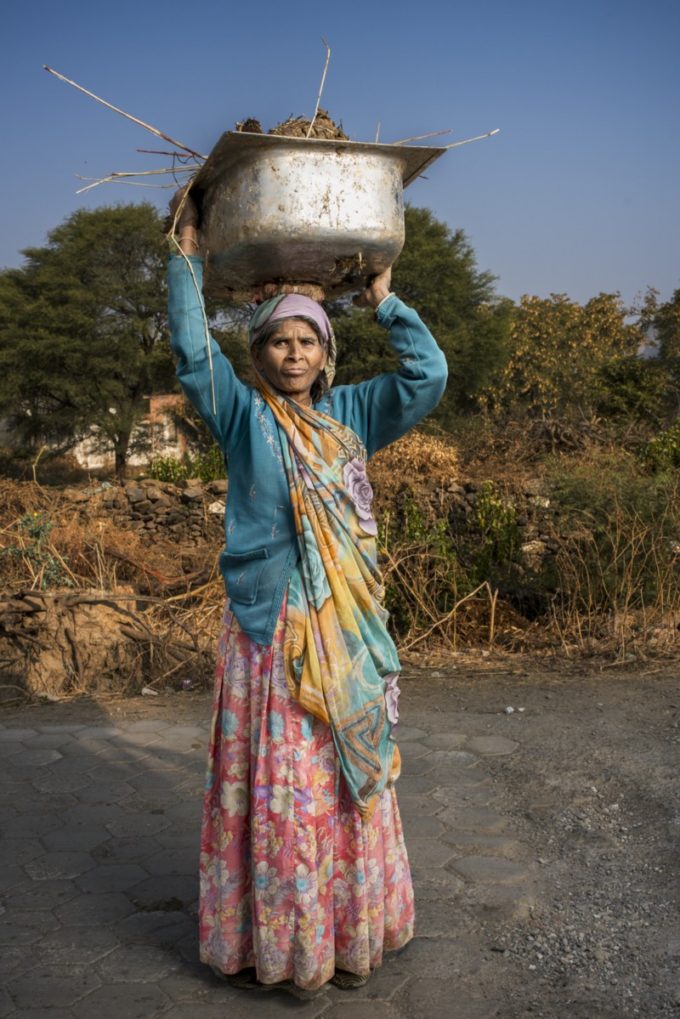
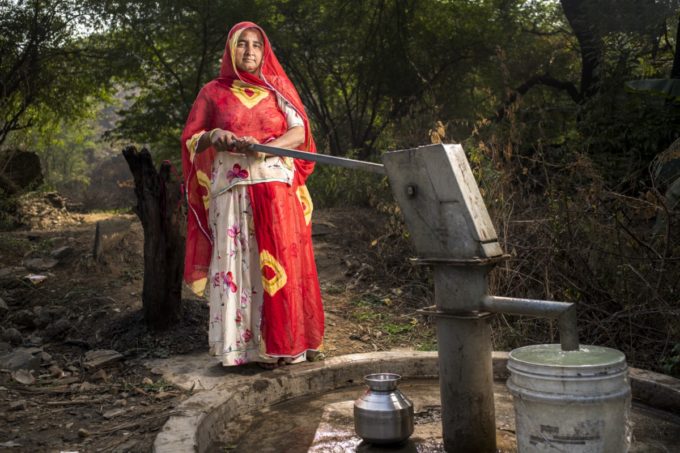
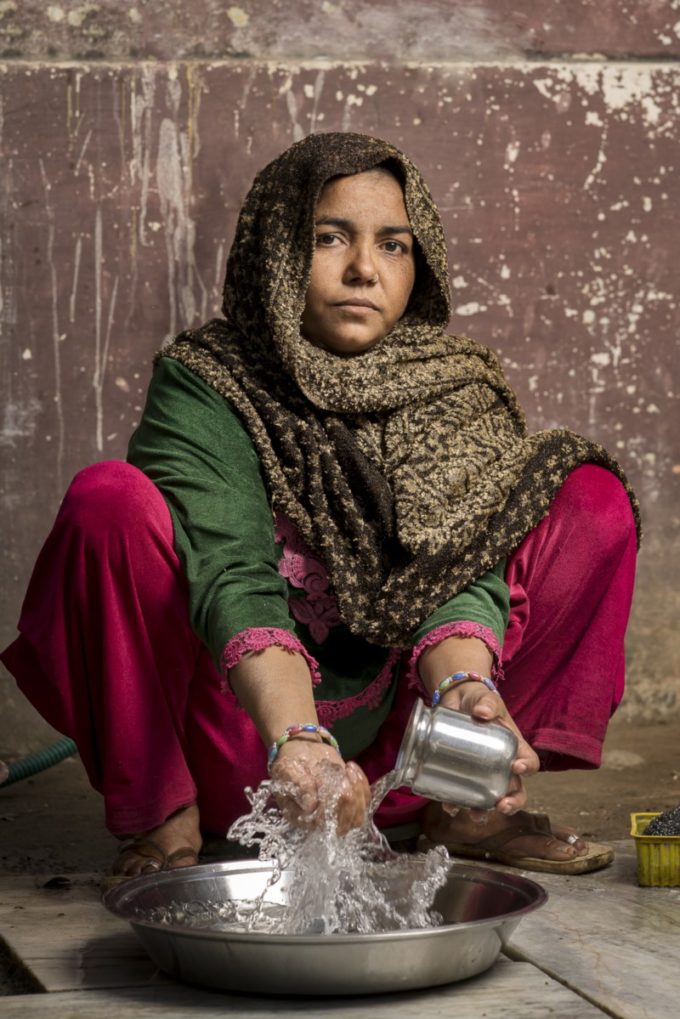
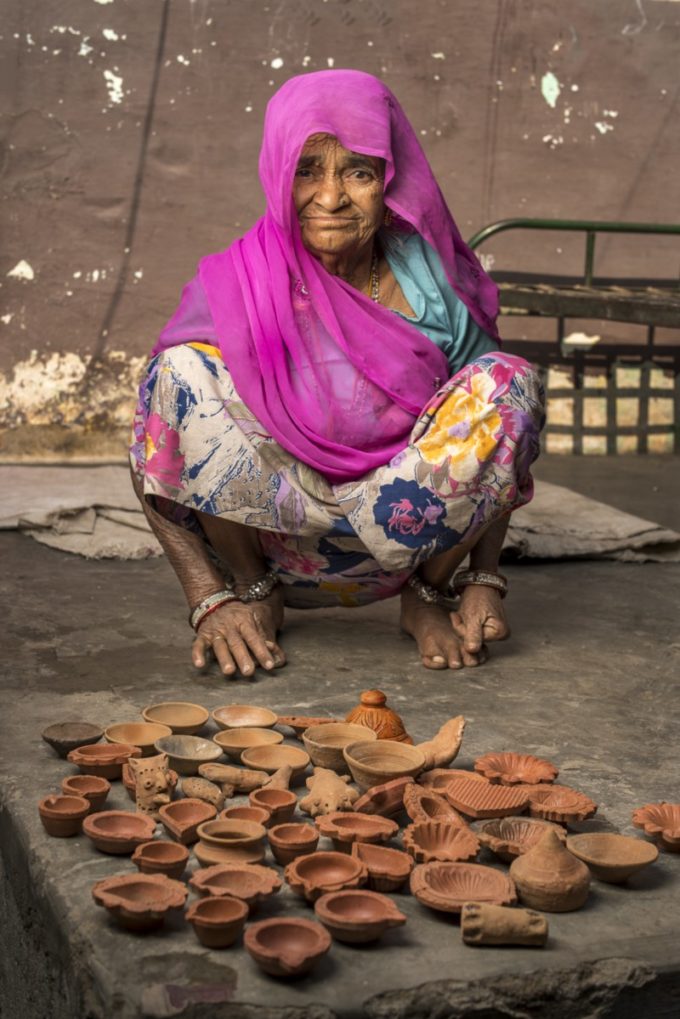
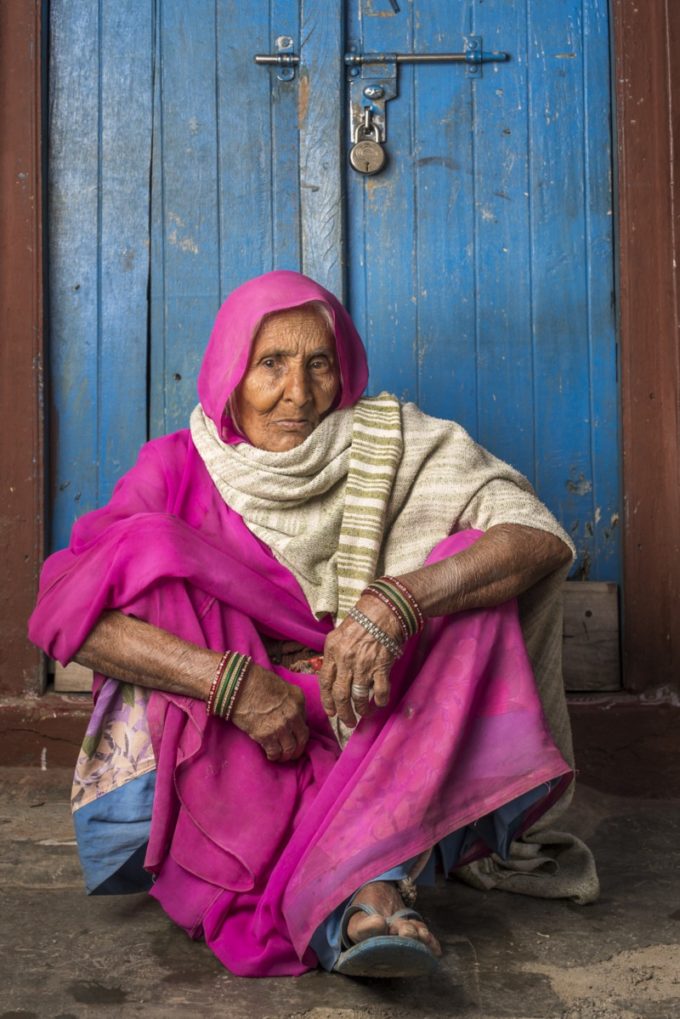
–
Plate 35 — Aapu with her grand kids visting from Ajmer; Motisir. Plate 36 — Hem Kumar and her children; Delwara.
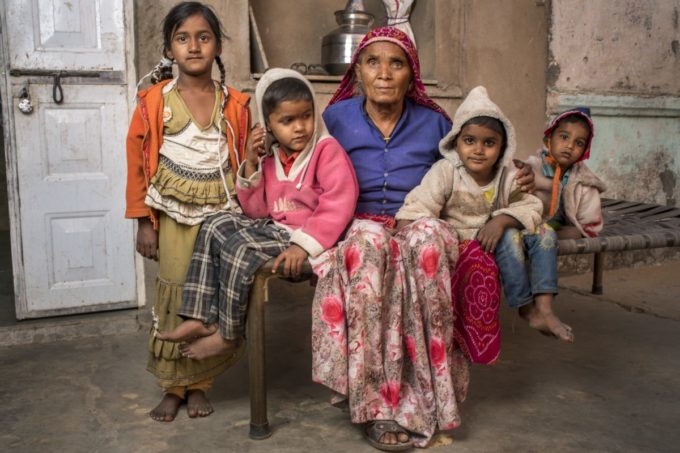
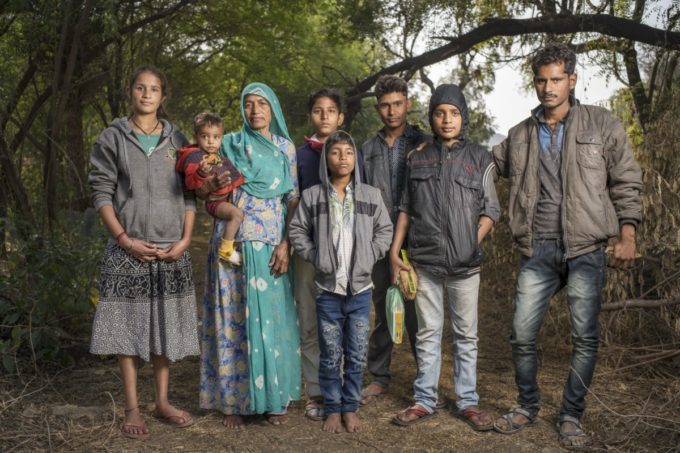
–
Plate 37 — Keval Patel working in his wheat field; Delwara.
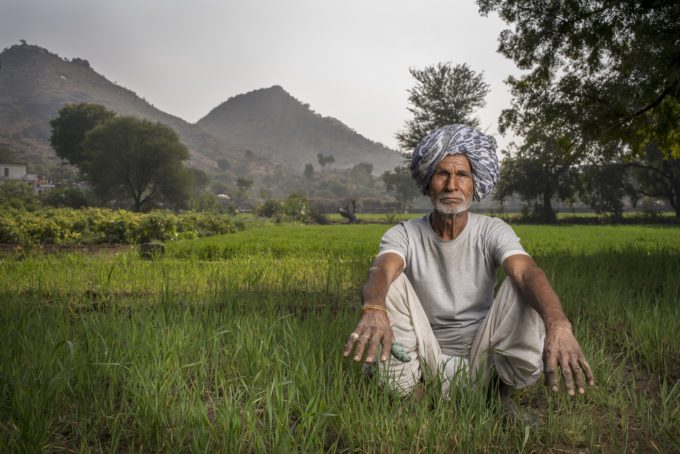
–
Portraits In The Field
With a background as a studio photographer, creating environmental portraits fell into a familiar pattern for me: Ask for permission, explain my motives, engage the subject in a conversation to put them at ease and draw out their character, create the portrait with the right equipment and then thank them for their cooperation.
Asking For Permission
Walking up to a stranger and asking for permission to create a portrait — in a foreign land, no less — seems like a daunting task. Fortunately, the hospitality and genuine curiosity of everyone I met in the villages, made this a simple process.
The first step was to avoid speaking in English. Using a hired translator, I asked for permission first and then explained my motive — namely that, I was working on a portrait project of the citizens of Rajasthan. Using the local language and as importantly, a translator who was born in the local community, seemed to break through any hesitancy on the part of my subjects. I made it a point to ask for names, occupation and asked follow up questions about their daily activities. Showing a genuine interest in their lives seemed to seal the deal every time.
Equipment
To keep my outfit light, I was traveling with a Sony α7RII mirrorless camera that was paired with Leica M lenses. The majority of the environmental portraits shown above were all taken with a 35mm Summilux lens while the close ups of the men (Plates 21, 22, 24, 25 & 26) were taken with a combination of 50mm Summilux and a 90mm Summicron lens.
Left to Right: Godox eVolv 200 Strobe, Leica 90mm f/2 Summicron (top) and Leica 50mm f/1.4 Summilux (bottom), Sony α7RII with Leica 35mm f/1.4 Summilux attached and a Fuji Instax Share SP-2 Printer. (Not shown: Godox XT1-S trigger)
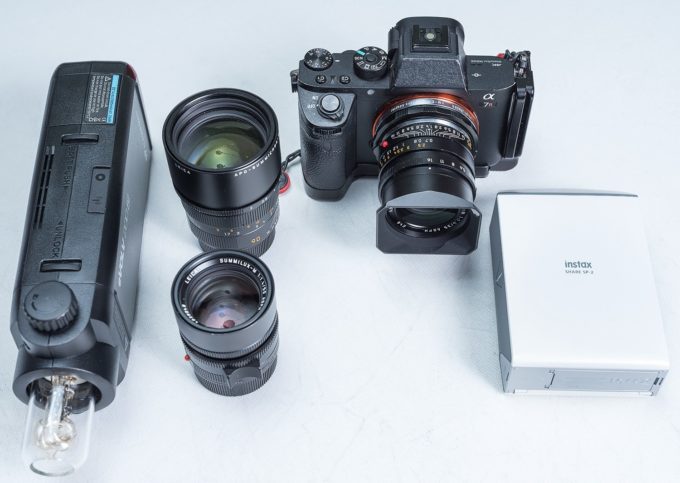
Using a manual focus lens takes some getting used to but these lenses are my day-to-day workhorses and their diminutive size and the well recognized quality of optics made them the perfect companion for the Sony camera. Perhaps it is just confirmation bias, but I felt that the small equipment allowed my subject to focus on building an emotional bond that enabled the portrait to be made quickly. Larger studio equipment, including a tripod, would have placed a physical barrier between us and made it that much harder to get to the collaborative state required for portraits.
Controlling Ambient Lighting
Harsh sunlight left dark shadows on faces, the odd goat (or two) butted up against my leg as I tried to steady myself without a tripod, all while a helpful translator tried to convey my instructions to the subject. Years of practice at home, allowed me to set my photography on auto-pilot while I tried to make a connection and elicit a relaxed expression from my subject.
The making of Plate 3. A few random goats decided to amble over for an investigation.
For the most part, I had little control over the surroundings. With a few minutes to take a portrait, I was forced to rely on whatever the background presented itself. In most cases, I encouraged my subjects to step out of the sun and into the inviting shade of a nearby tree or house. This inevitably reduced the squinting of the eyes while enabling me to balance exposure on the face with the surroundings.
Lighting and Exposure Technique
To separate the subject from the cluttered background — often just shrubbery and trees — I exposed to about 2 stops below the background lighting. With the camera set to ISO 50 (the lowest I could go), the shutter speed set to 1/250th of a second (my max sync speed) and my aperture set to about f/5.6 or f/8, the lightmeter in the camera indicated a two stop underexposure. This darkened the background and prevented it from competing with my subject for attention.
Now I turned to my unpaid lighting assistant. This was usually the lucky fellow who happened to wander by and stopped just long enough to look inquisitively at what I was up to. With a polite but authoritative smile, I handed him my Westcott 36″ Rapid Octa XL softbox. Built on an umbrella frame, this light modifier quickly pops open and you can leave both diffusion panels permanently attached to it. Time to deploy is just a handful of seconds and invaluable in the field when juggling a camera with the other hand.
The making of Plate 11. My translator and guide is holding up the Westcott.
Using a Bowens mount S-type speedlite bracket, I slipped a Godox eVolv 200 portable light into the Westcott. This gave me 200 w/s of light out in the field without having to juggle external battery packs or additional cabling of any kind. Indeed, for the two weeks, I left the Godox embedded in the Westcott — just folding it down like an umbrella in between use. I can’t recommend this combination enough for lighting in the field. The double diffusion panels of the Westcott robs you of 2 stops of power but provides a soft light that can alleviate any shadows on the subject faces.
A Godox XT1-S off-camera flash trigger was mounted on the camera hotshoe to act as a radio transmitter for the eVolv. The XT1-S and the eVolv were both left on full Manual mode (instead of TTL) to give me a consistent exposure between shots and the flash power was set to a ratio of 1:1 (full power).
High Speed Sync (HSS) was simply not an option. Firing at full power, switching to HSS led to a vampire like power loss that left me with a severe flash underexposure. In the end, I stayed at my camera sync speed and maneuvered the subject into shade rather than try to overpower the sun with a 200 w/s flash.
The above combination of camera and flash setting proved to be a durable formula. Over two weeks, sunny days dominated — albeit with plenty of haze and smog in the background — and I rarely had to change any settings on the camera.
Saying Thank You
Any portrait, even an environmental sitting in the deserts of Rajasthan, require the collaboration of the subject and the photographer. As I quickly found out, this involved saying Thank You and then graciously accepting theirgratitude in whatever form it was offered.
Enjoying chai with Kankulalji Nagda (see Plate 5) after our portrait sitting in his wheat field
This meant quite often putting away the camera (and the day’s schedule) and walking with the grateful villager back to his home so that his family could share a cup of chai with us. This quickly became the highlight of my photography adventures in Rajasthan. The incredible taste of freshly made chai — often with milk that came from a nearby cow — while siting crosslegged with my former subjects will be part of my memories of the hospitality of the Rajasthani villagers.
Some mornings ended up with us enjoying a half-dozen cups of chai before lunch time. It would have been a faux pas to have declined even the sixth cup of chai and would have made it that much harder for the next photographer to visit the village.
The vast majority of our subjects, enjoyed our company and the collaborative process of creating the portraits, and would only accept our thanks. To show my added gratitude, I printed out a small instant picture (similar to a polaroid) using a Fuji Instax Share SP-2 printer. I transmitted an image from the camera to my iPhone using Bluetooth and then used the Fuji Instax Share app to print out the image on the hand-held printer. These little mementos became very popular. Indeed, after we printed out the first thank you picture, we were quickly surrounded by eager volunteers for the next portrait.
Chauta Ram shares his Fuji Instax mini prints with his grand-children who were visiting him during their winter break from school in the city.
A few villagers — understandably, given their economic situation — preferred a cash payment.
This was usually negotiated beforehand and ranged from 10₹ to 200₹ range (about 16 cents for children up to a little over $3 for groups of adults). The Fuji Instax prints cost about 50 cents per print. So whether I parted with a print or cash, my costs averaged out to roughly $1 per portrait taken. Quite a bargain when you consider that I left with priceless memories of new friendships created under the beating sun.
Two weeks of driving hundreds of miles through the Rajasthan countryside left us with indelible memories of the people we had met. We will always remember the deep generosity of those who had so little in the way of material possession.
As Pico Iyer, with whom I began, wrote, “we were the eyes and ears of the people we meet, their only contact with the world outside.” Remembering these words, we did our best to be ambassadors of not only our country and culture, but also representatives of all the photographers and adventurers who had yet to come.
Shourya is an amateur photographer based in the greater Washington, D.C. area. Follow him on Instagram and see more articles like this at ShouryaRay.com.

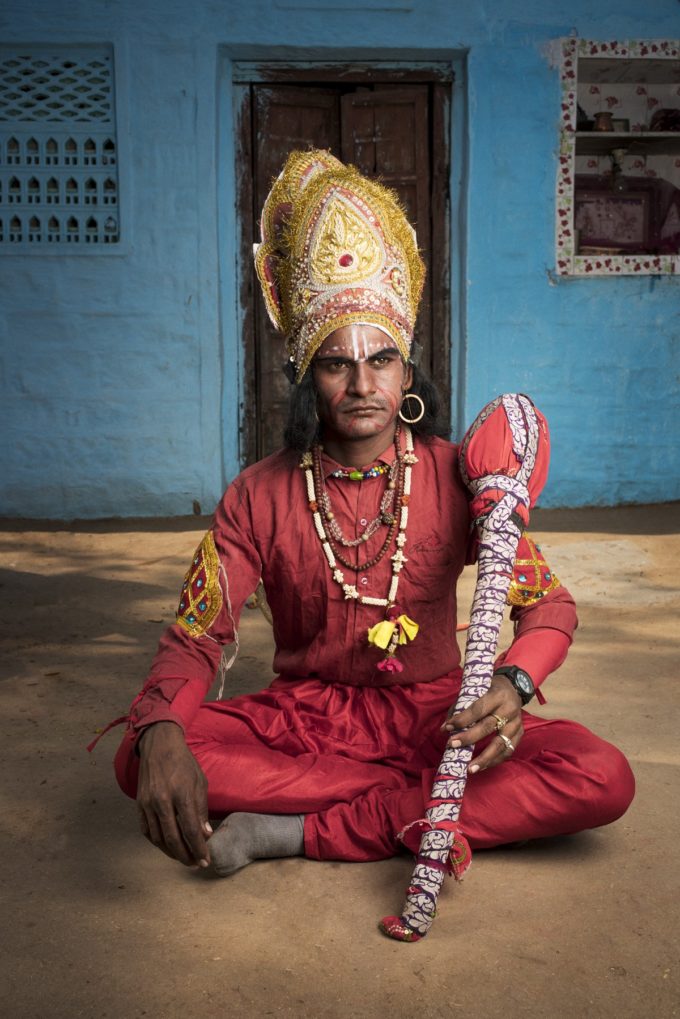
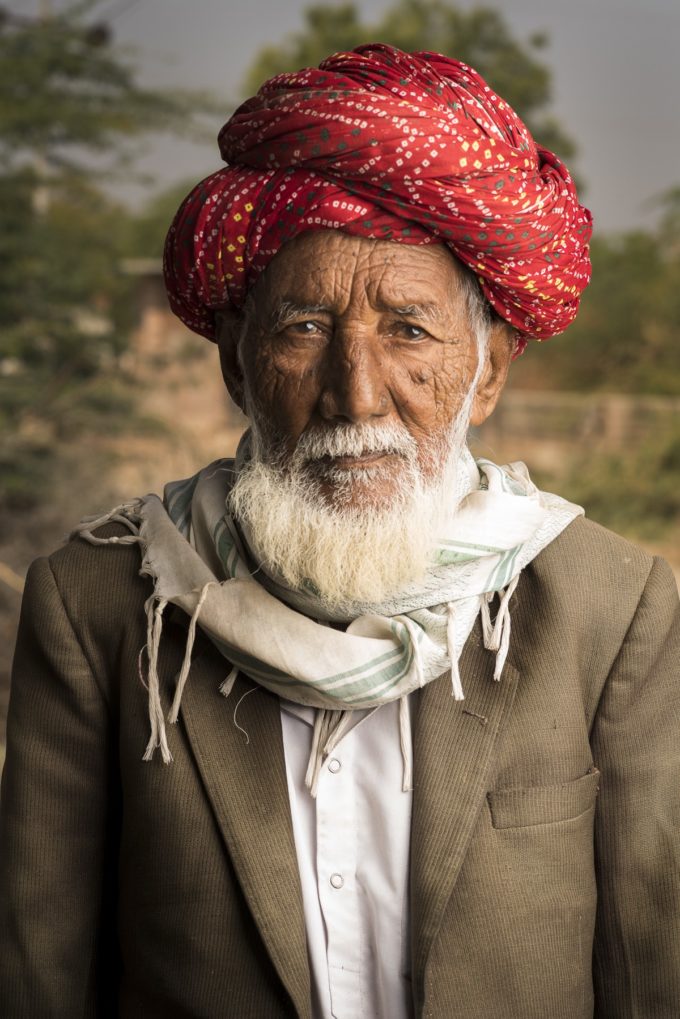
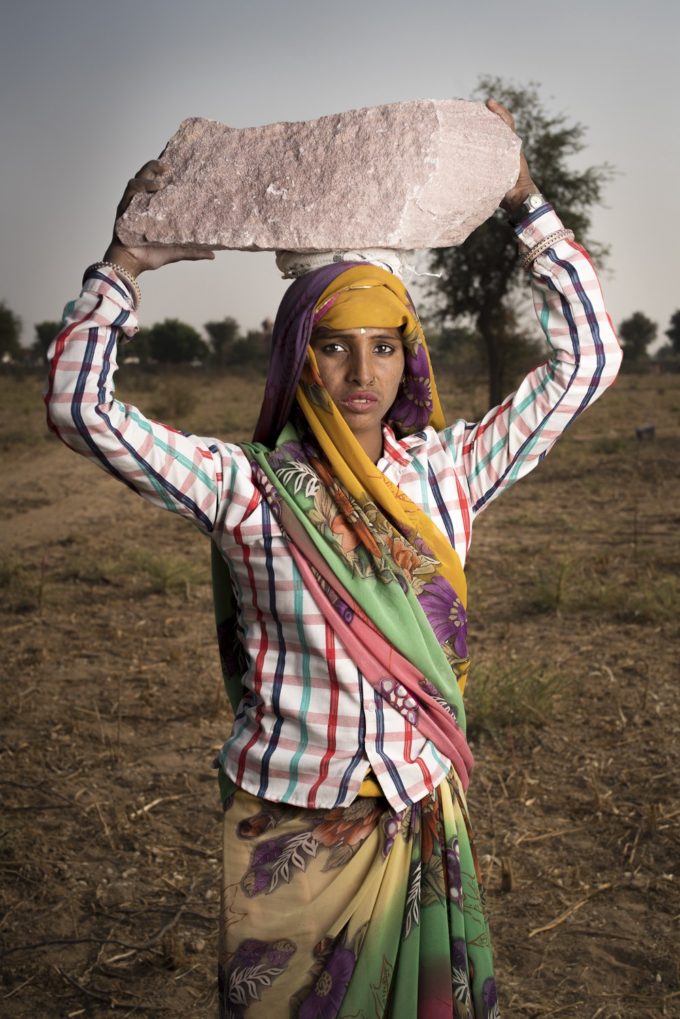

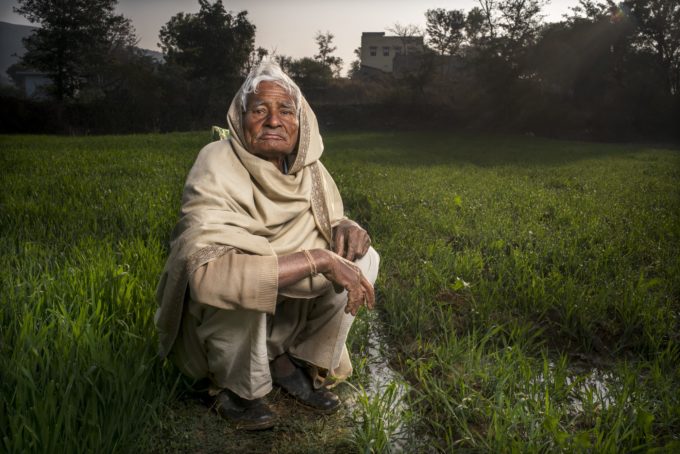
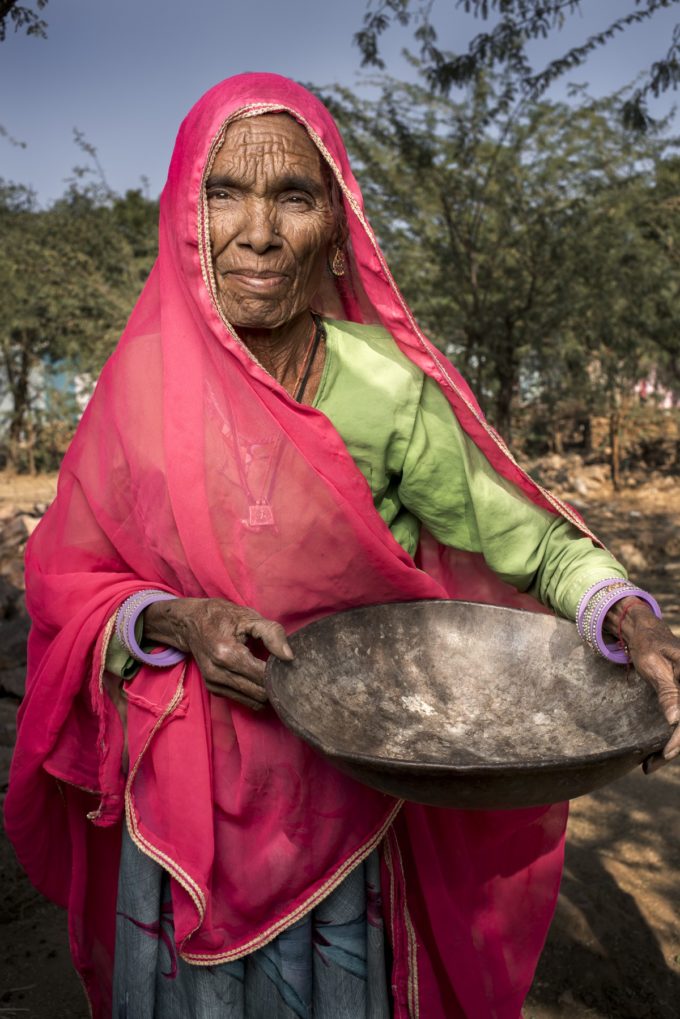
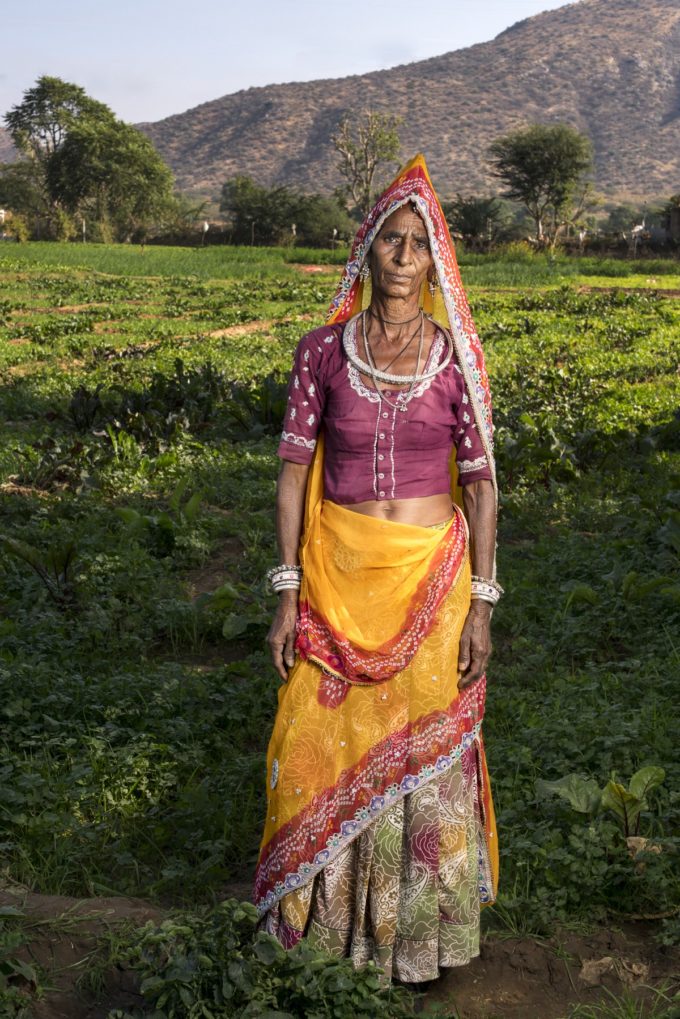
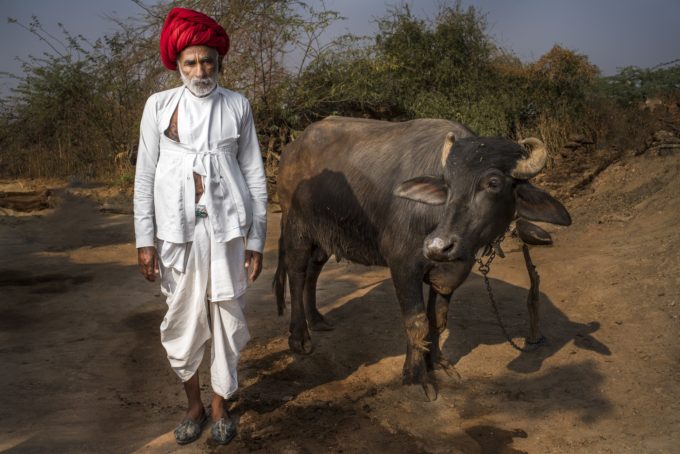
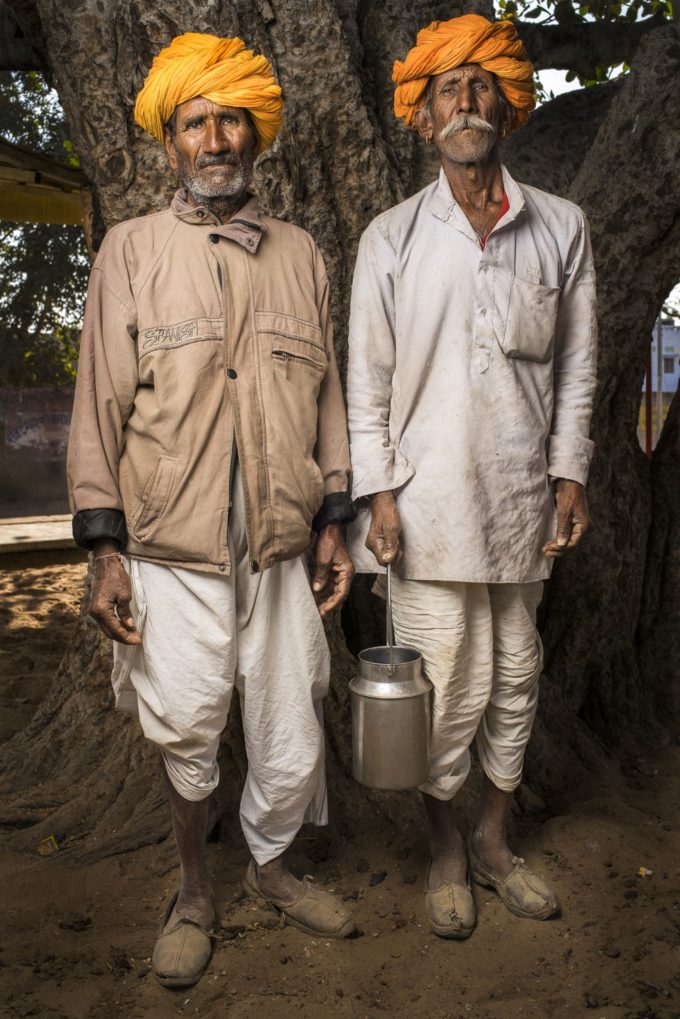
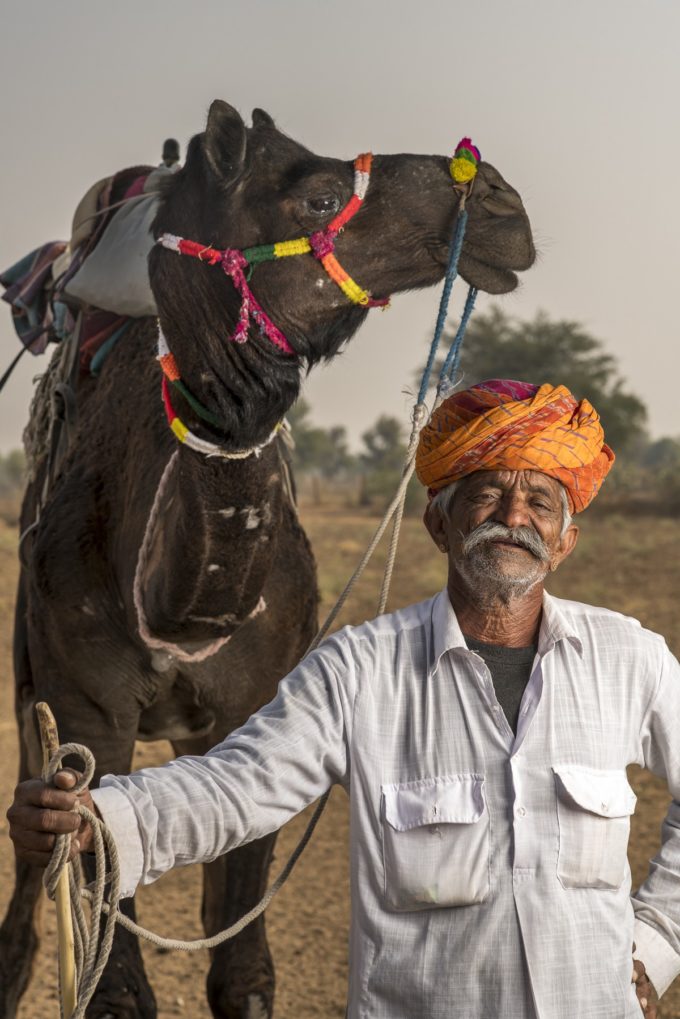
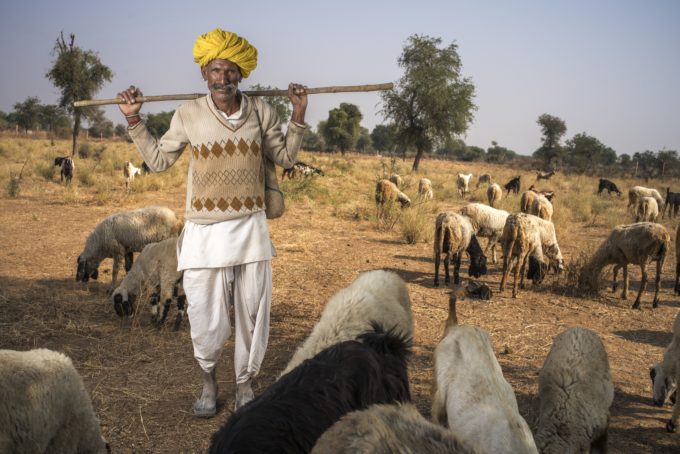
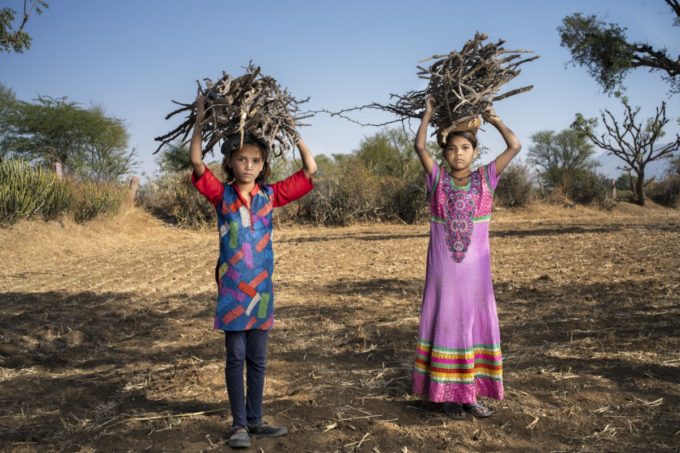
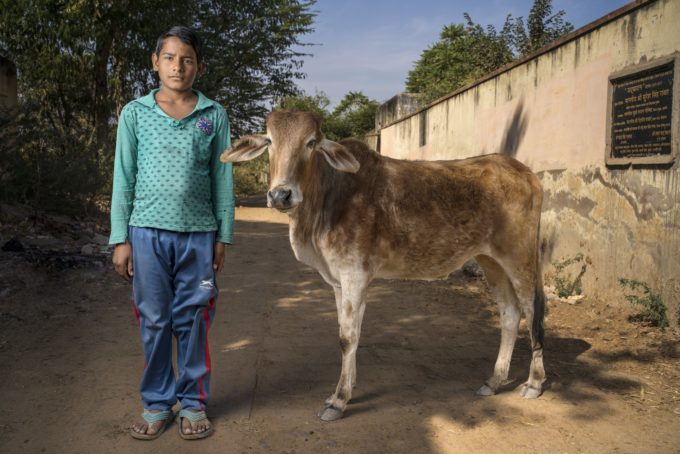
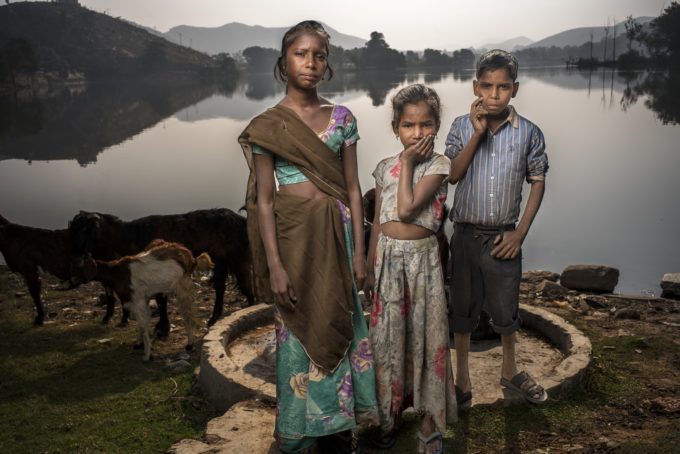
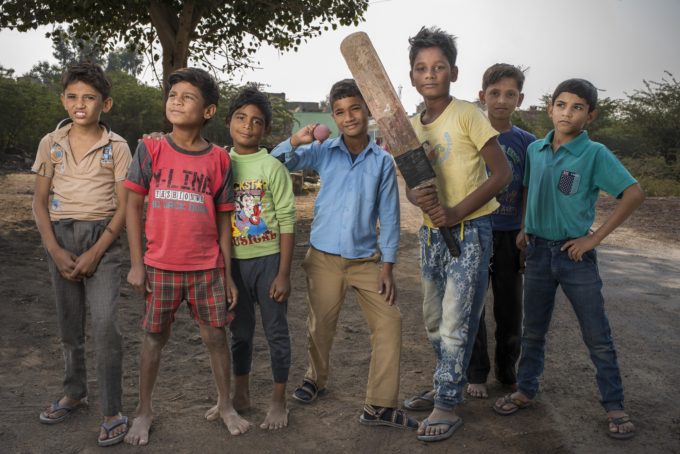
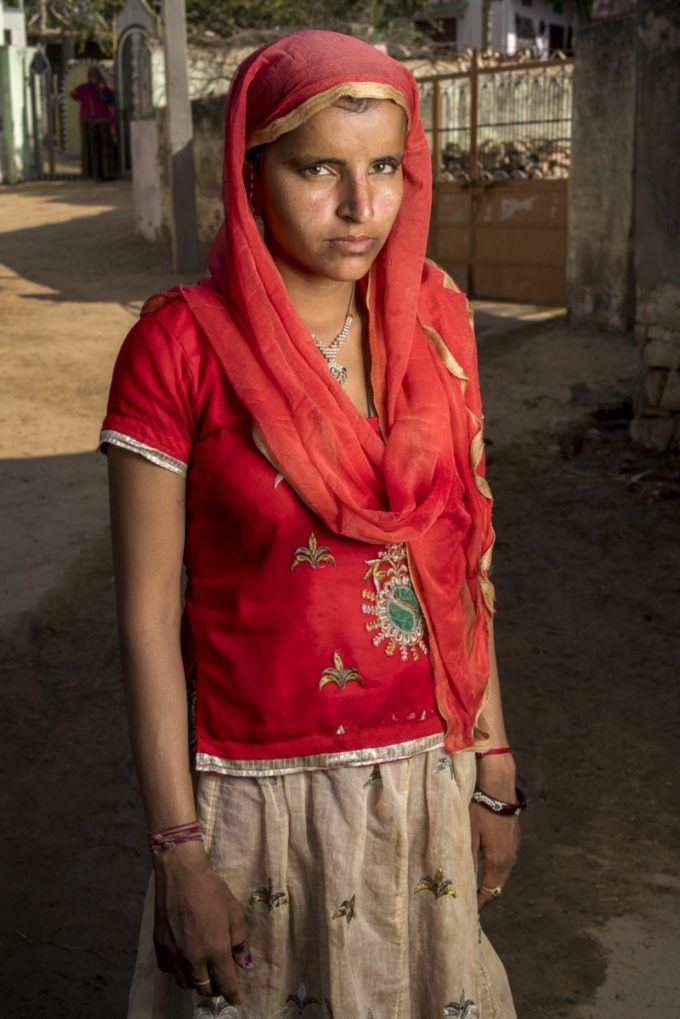
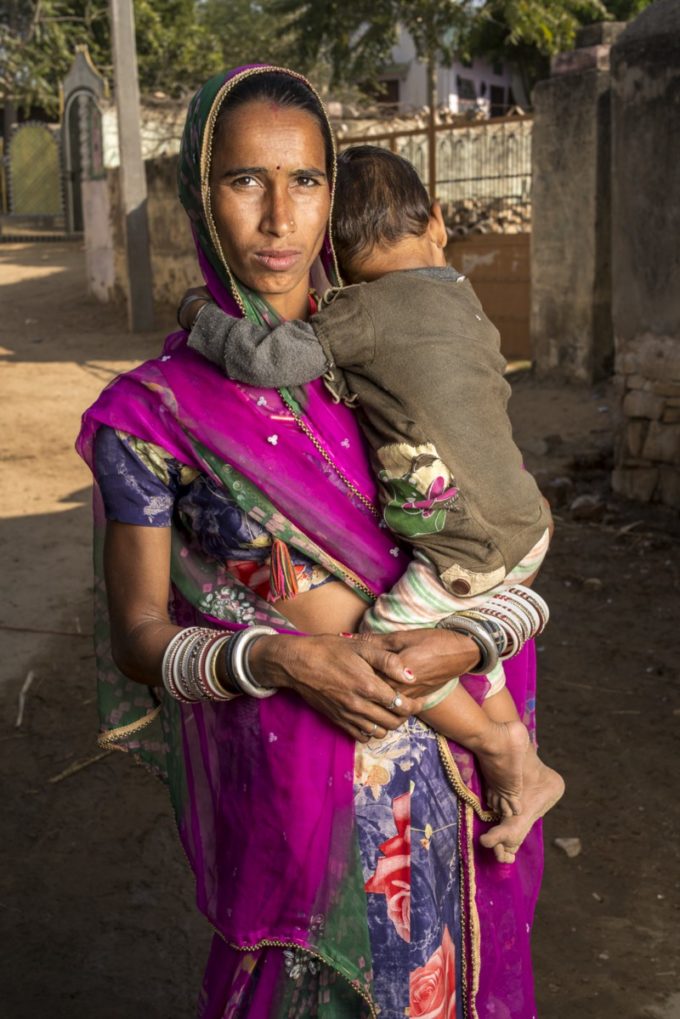
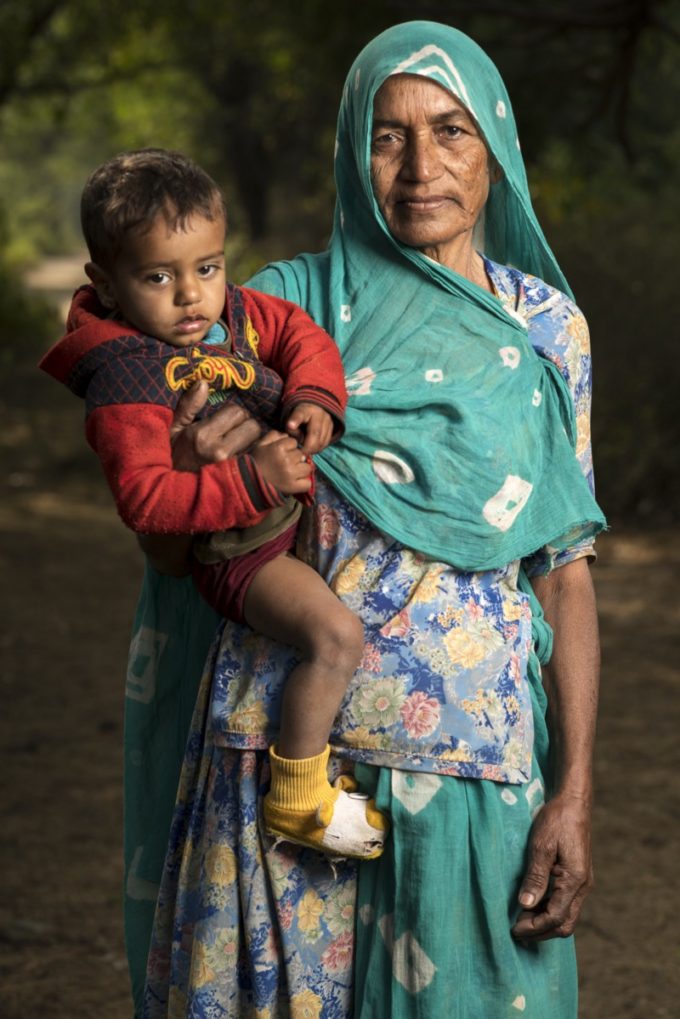
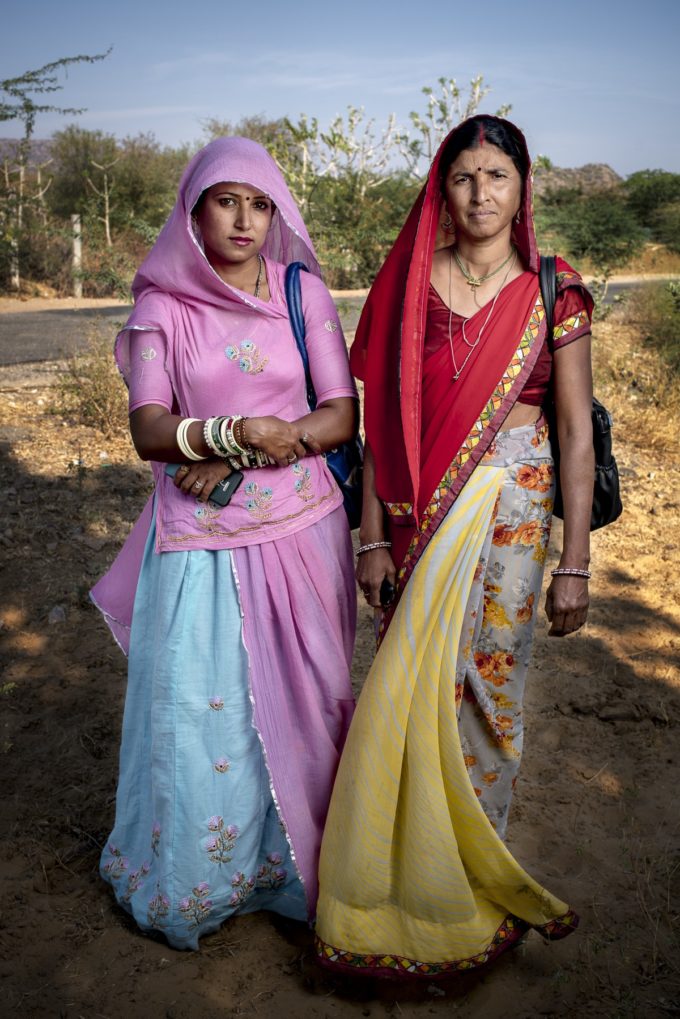
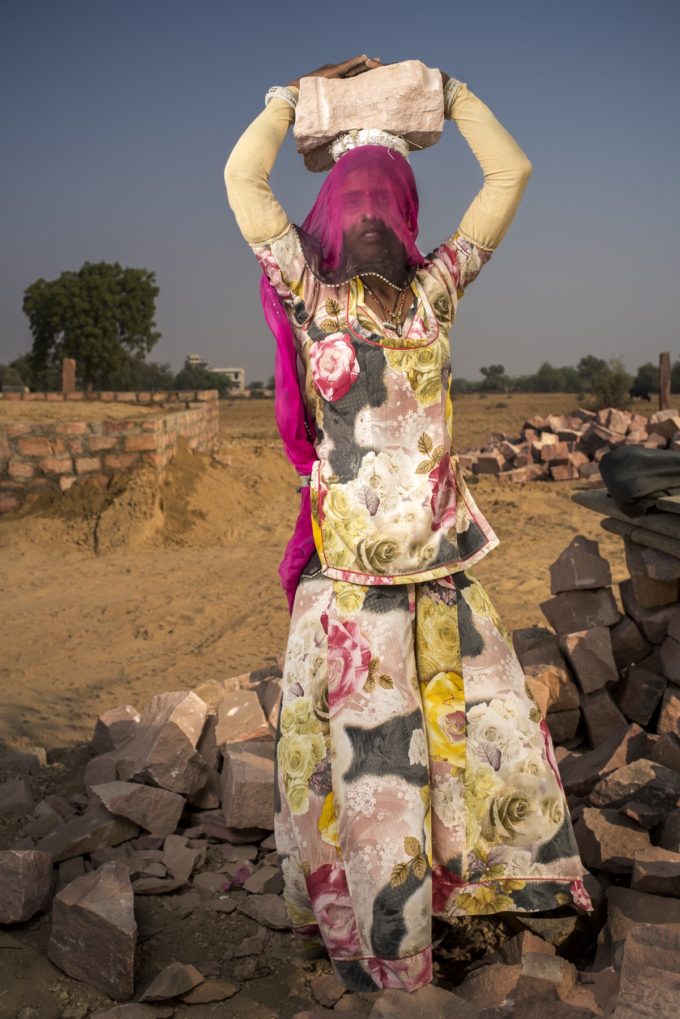
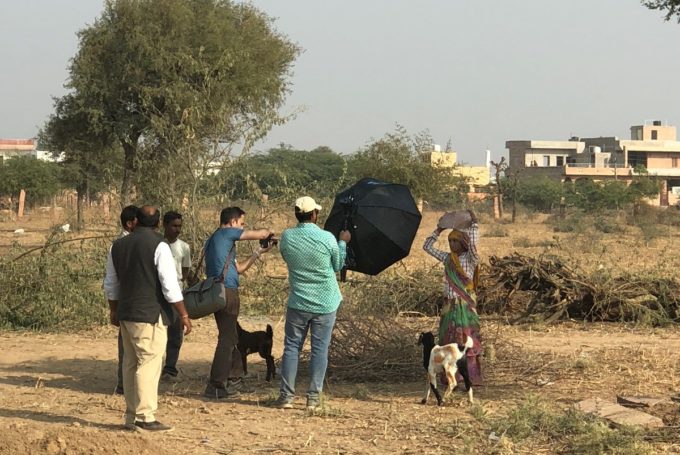
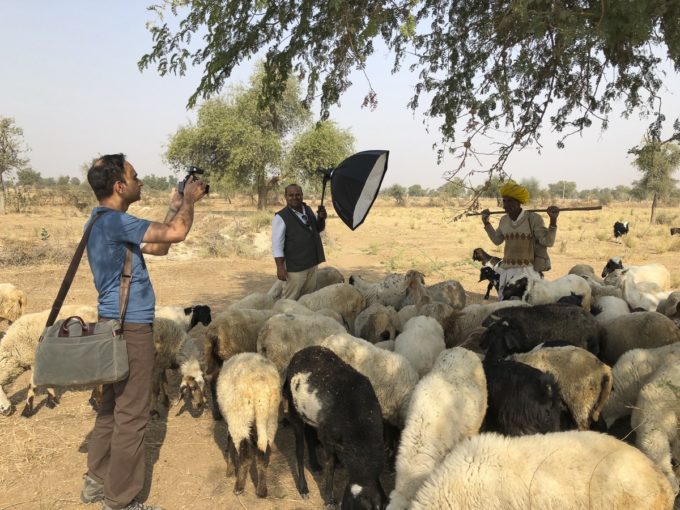
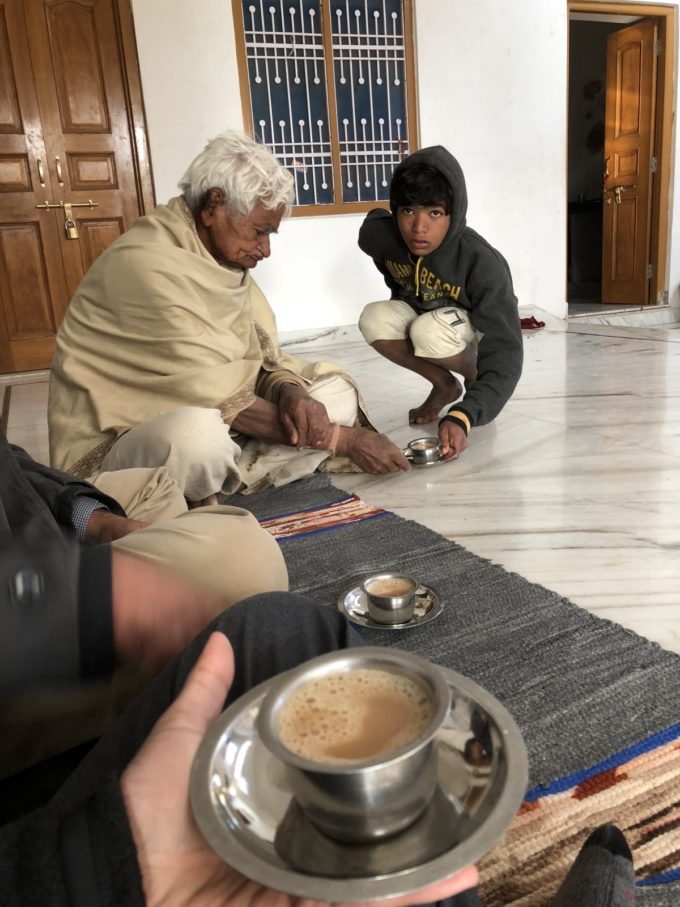
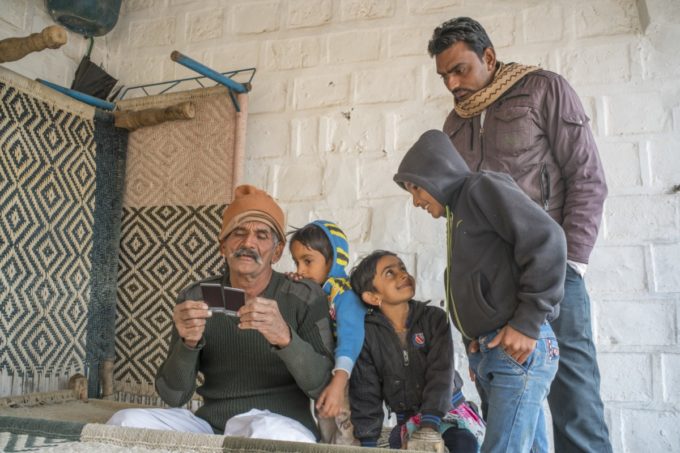

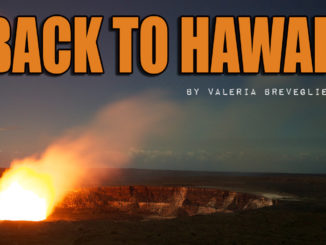
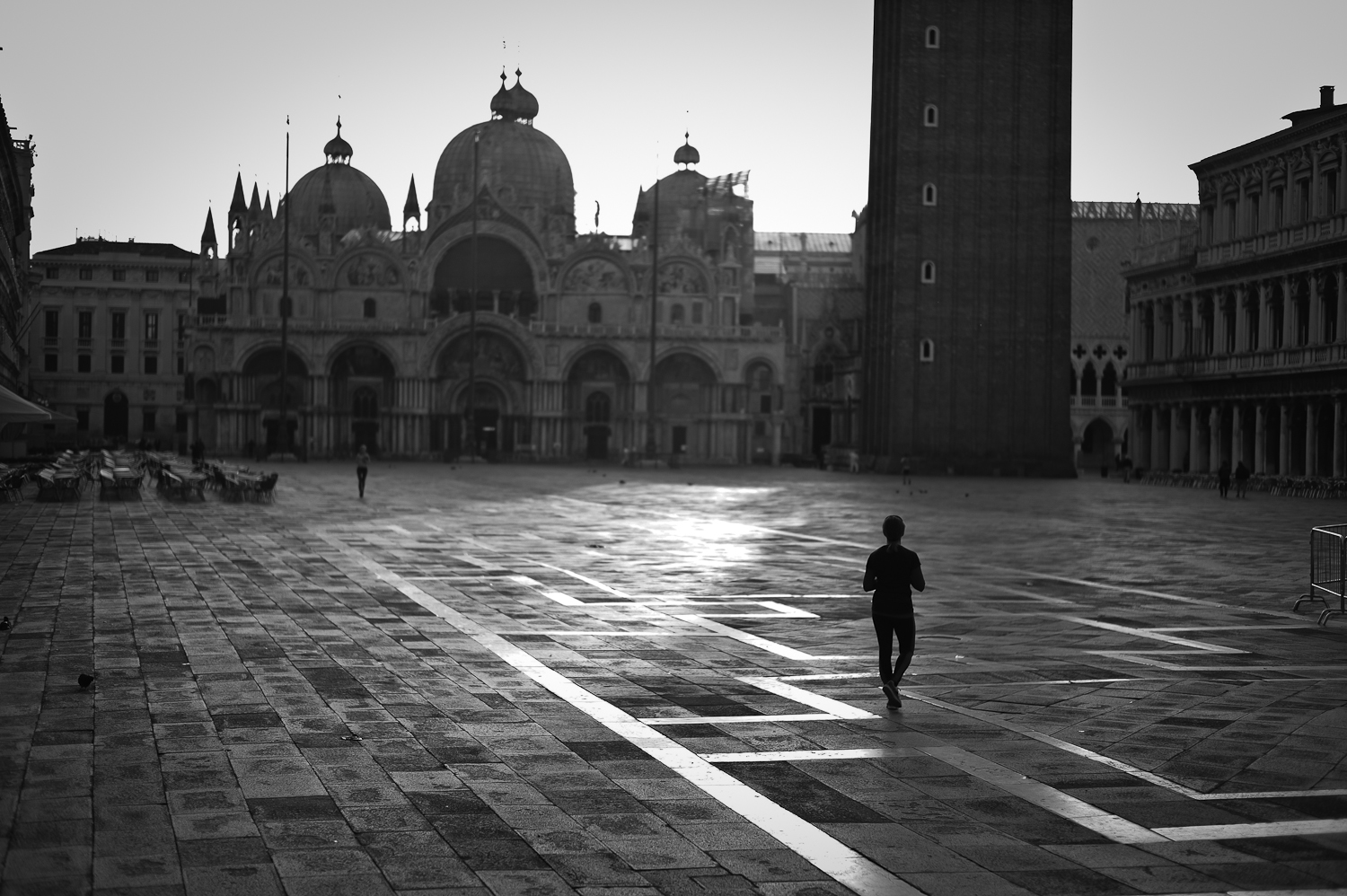
I really enjoyed this series of portraits and appreciate your detailed bts! In particular, I thank you for your cultural sensitivity and consideration for your subjects and those of us who may follow in your footsteps. The humility and graciousness of your subjects were well captured.
Congratulations for accomplishing your goal:
Containing the humanity of the moment.
(The results show that whatever your doing is right, and not just photographically – you’re sharing the lives of the people you’re presenting, by being willing to take the time and both respect and appreciate their existence).
Beautiful work! What adapter do you use with the Leica M lens?
Just an incredible set of portraits that really illustrate the beauty and culture of these people. Thank you for sharing
Awesome portraits. Great photography.
Very good wotk! Having briefly lived in India, these images made me miss it. Allot! Thank you also for being so generous with sharing your methodology.
Impressive and beautifull work without a doubt. But some pictures show, at least for my taste, a bit too much use of the off-camera flash, so they are in the risk to come across more like glossy magazine-like photography than a reportage. A more reportage-like style might contribute to a more trustworthy realism.
Wonderful work and thanks for all the explanations! I would like to ask you if you didn’t think of warming a bit with a filter the strobe light in the open air situations.
Outstanding work, loved looking at this.
After the first few pictures, I realized that my jaw was half open in awe. Then the awe reduced considerably when I read about how you want about taking these pictures. Lights, poses etc. I still say all all them carefully.
After the end of the article, I feel: this way or that way, how does it matter?
This is great stuff. Keep doing what you are enjoying.
Really nice work, but what makes these “plates” as opposed to photographs or images as we’ve agreed to call every singe other image on the entire internet?
I don’t want to sound negative, because these are very impressive shots, but I did have a feeling of a number of them being over-posed. Perhaps that’s what made them possible. Am I right in detecting a (unacknowledged) debt to Steve McCurry?
Stunning work.
Very nice pictures indeed, you also showed that a Sony camera with Leica lenses can make a very good match………
Stunning! Fabulous article.
Beautiful, amazing faces and wonderful characters cought on lovely vivid but muted colour, well done. I too would like to see these in a book.
Very nice and great information. Wonderful portraits and process. Hope to see more from your wanderings!
Regards,
Bob
Wonderful photographs. I have been to Rajasthan numerous times and you have captured the mood, colours and people marvellously. Great work!
Great portraits, the two ladies on plate 4 made me laugh ,fine work well done.
Cool technique and great pictures
This is incredible work. I feel very humble. if you ever make a book about this, I’ll buy it.
Dirk.
Fantastic! More stories like these, please. Gorgeous photos and I loved learning the process behind them.